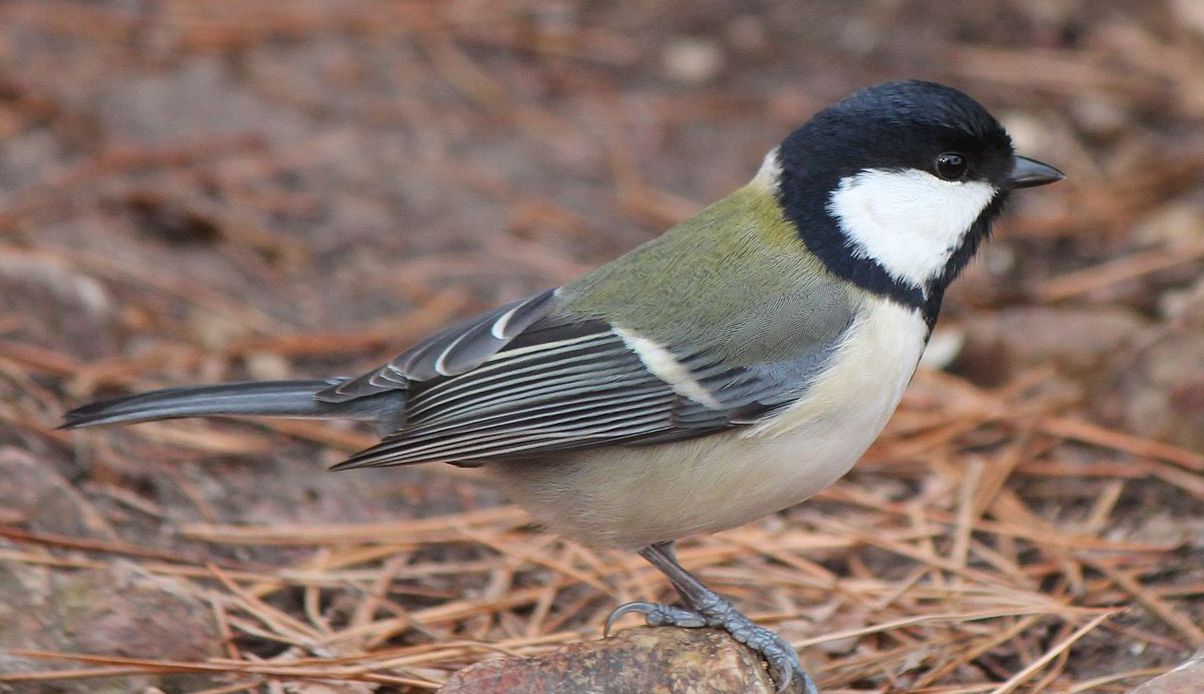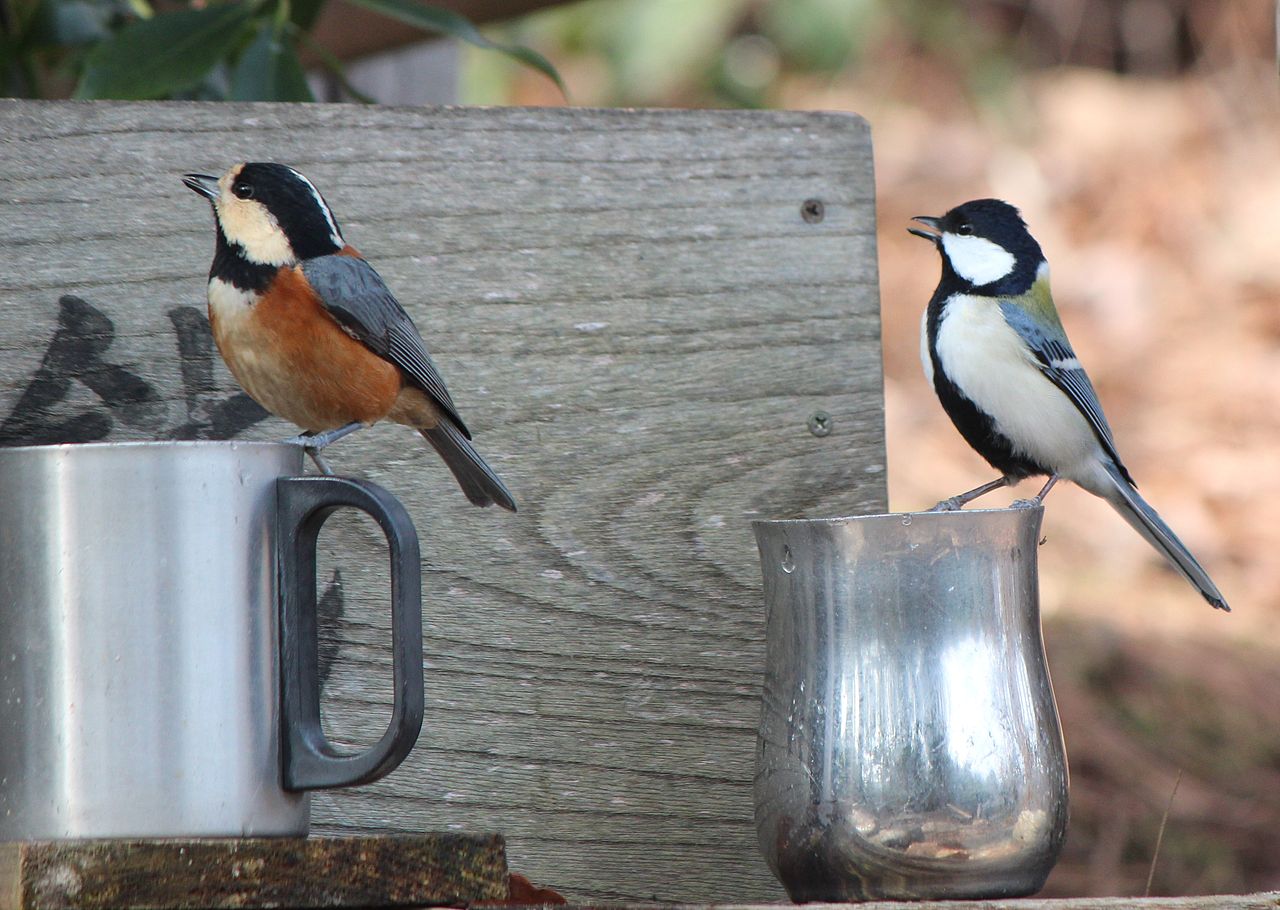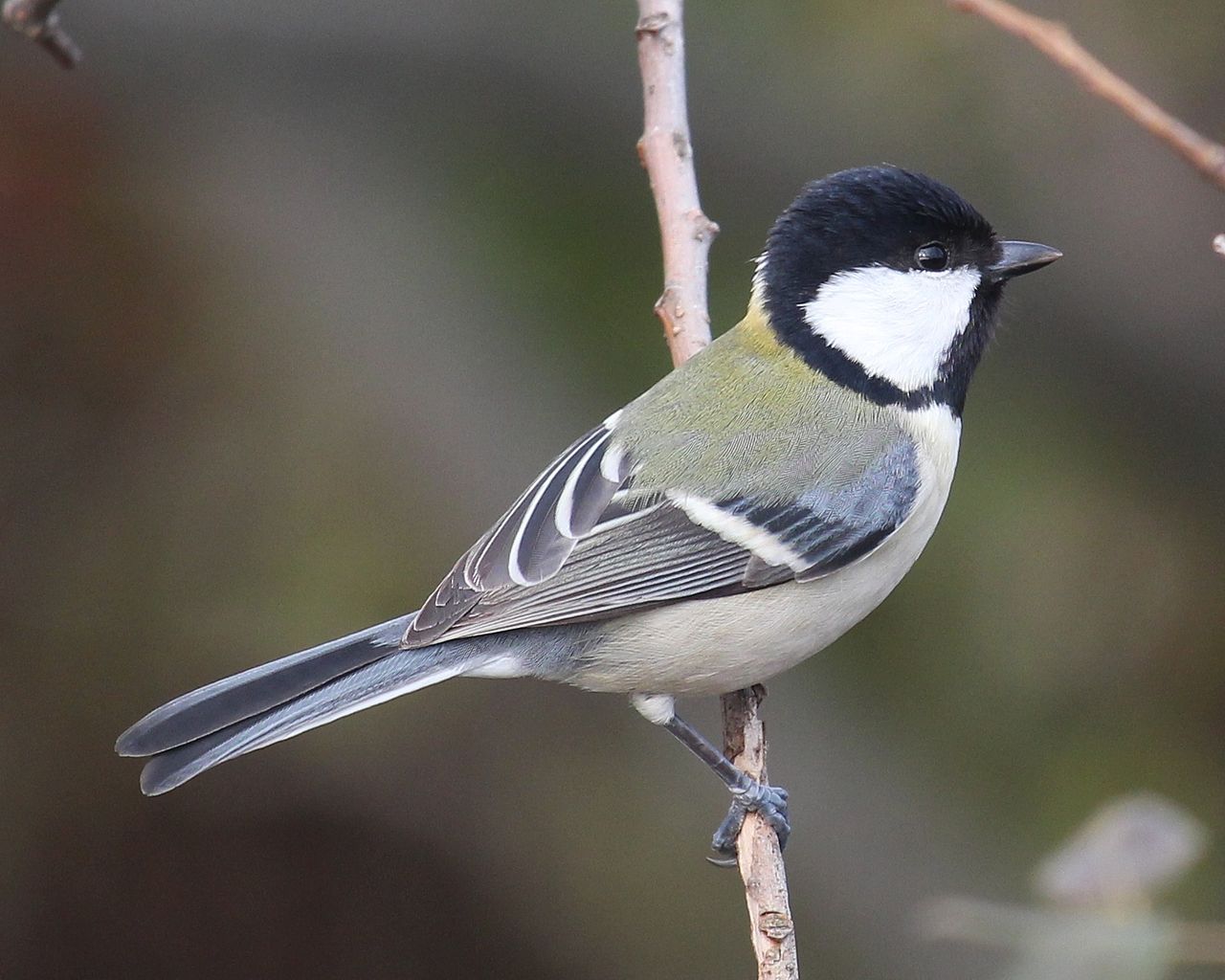
Stop us if you’ve heard this one: So a pair of great tits walk into a bar and start chatting…
It seems the comedy gods have bestowed a once-in-a-lifetime gift upon fans of childish humor recently, as the powers that be have colluded to ensure that, with a breakthrough Japanese discovery in animal behavior research involving an unfortunately named avian species, the phrase “great tits” will be uttered over and over again in un-ironic seriousness in major news outlets worldwide for the next few days.
Toshitaka Suzuki, a researcher of animal behavior and cognition, served as lead author of a new paper titled, “Experimental Evidence for Compositional Syntax in Bird Calls,” which reveals that a species of bird known as the Japanese great tit (note the importance of word order here, kids) appears able to chain different chirps and whistles together to create what may be complex “sentences” used to communicate important information to nearby members of the species. In essence, Suzuki and his team have discovered talking tits.
This discovery is apparently the first of its kind regarding any species other than humans and marks a significant step in understanding the way animals communicate. It’s generally believed – barring future discoveries to the contrary – that most animals communicate in a very basic “language” in which certain vocalizations are prescribed a specific meaning to the listener, with more advanced species like certain types of monkeys able to form rudimentary “sentences” using phonological syntax (basically, adding prefixes and suffixes). But, the Japanese great tit is apparently the first animal observed using compositional syntax – combining sounds with disparate meanings to form a complex, intelligible sentence.
In observing these extremely important tits (at least the second most important kind we’ve heard of), Suzuki and team found that the birds exhibited specific behaviors in response to varieties of calls the team assigned the codes “A,” “B,” “C,” and “D.” Over ten years of field observation, Suzuki apparently learned that an “ABC” call corresponded to an alert to nearby tits to scan for potential predators. “D” apparently was observed as a call for nearby birds to approach the “speaker,” and an “ABCD” call prompted birds in the area to perform both actions, one after another.
Things apparently got interesting when Suzuki and his colleagues replicated the sounds but in a “DABC” order – which generally prompted no action from nearby birds, suggesting that the order of the calls – the syntax – is important.
This officially makes a bunch of birds more capable of speech than we are in the presence of tits (thanks, we’ll be here all week).
Source: Morning Ticker
Images: alpsdake via Wikimedia Commons



 Large bat species discovered to be breeding in Japan for the first time
Large bat species discovered to be breeding in Japan for the first time Japan seems just a little more terrifying with discovery of local leech’s superpower
Japan seems just a little more terrifying with discovery of local leech’s superpower Krispy Kreme releases tit doughnuts in Japan
Krispy Kreme releases tit doughnuts in Japan Adorable animal earrings: The perfect accessory for any nature lover!
Adorable animal earrings: The perfect accessory for any nature lover! First new Japanese cockroach species in 35 years discovered by scientists【Photos】
First new Japanese cockroach species in 35 years discovered by scientists【Photos】 How to order snacks on a Shinkansen bullet train in Japan
How to order snacks on a Shinkansen bullet train in Japan Japan’s new difficult-to-drink-from beer glass protects your liver, but it’s a brutal experience
Japan’s new difficult-to-drink-from beer glass protects your liver, but it’s a brutal experience Demon Slayer: Kimetsu no Yaiba gets new roller coaster attractions and food at Universal Studios Japan
Demon Slayer: Kimetsu no Yaiba gets new roller coaster attractions and food at Universal Studios Japan Burger King Japan suddenly adds Dr. Pepper and Dr. Pepper floats to its menu nationwide
Burger King Japan suddenly adds Dr. Pepper and Dr. Pepper floats to its menu nationwide New Pokémon ice cream, dessert drinks, and cool merch coming to Baskin-Robbins Japan【Pics】
New Pokémon ice cream, dessert drinks, and cool merch coming to Baskin-Robbins Japan【Pics】 New Nintendo Lego kit is a beautiful piece of moving pixel art of Mario and Yoshi【Photos】
New Nintendo Lego kit is a beautiful piece of moving pixel art of Mario and Yoshi【Photos】 New samurai glasses are Japan’s latest weird must-have souvenir
New samurai glasses are Japan’s latest weird must-have souvenir Kyoto Tower mascot termination reveals dark side behind cute Japanese characters
Kyoto Tower mascot termination reveals dark side behind cute Japanese characters Hello, cosmetics! Clinique teams up with Hello Kitty this summer for first-time collaboration
Hello, cosmetics! Clinique teams up with Hello Kitty this summer for first-time collaboration This Nara workshop has been making deer crackers for more than 100 years and offers tours【Photos】
This Nara workshop has been making deer crackers for more than 100 years and offers tours【Photos】 Nintendo history you can feel – Super NES, N64, and GameCube controllers become capsule toys
Nintendo history you can feel – Super NES, N64, and GameCube controllers become capsule toys “The most Delicious Cup Noodle in history” – Japan’s French Cup Noodle wins our heart【Taste test】
“The most Delicious Cup Noodle in history” – Japan’s French Cup Noodle wins our heart【Taste test】 Starbucks releases a cute Frappuccino and Unicorn Cake…but not in Japan
Starbucks releases a cute Frappuccino and Unicorn Cake…but not in Japan McDonald’s Japan’s Soft Twist Tower: A phantom ice cream only sold at select branches
McDonald’s Japan’s Soft Twist Tower: A phantom ice cream only sold at select branches Yabai Ramen: What makes this Japanese ramen so dangerous?
Yabai Ramen: What makes this Japanese ramen so dangerous? Finally! Nintendo Japan expands Switch 8-bit controller sales to everybody, Online member or not
Finally! Nintendo Japan expands Switch 8-bit controller sales to everybody, Online member or not Japanese government wants to build luxury resorts in all national parks for foreign tourists
Japanese government wants to build luxury resorts in all national parks for foreign tourists To combat declining birth rate, Japan to begin offering “Breeding Visas” to foreigners
To combat declining birth rate, Japan to begin offering “Breeding Visas” to foreigners 10 things you should buy at 7-Eleven in Japan
10 things you should buy at 7-Eleven in Japan Studio Ghibli releases anime heroine cosplay dresses that are super comfy to wear
Studio Ghibli releases anime heroine cosplay dresses that are super comfy to wear Woman charged for driving suitcase without a license in Osaka
Woman charged for driving suitcase without a license in Osaka Studio Ghibli unveils My Neighbour Totoro miniature house model
Studio Ghibli unveils My Neighbour Totoro miniature house model Kyoto experiencing problems with foreign tourists not paying for bus fares, but not on purpose
Kyoto experiencing problems with foreign tourists not paying for bus fares, but not on purpose Fighting mild hunger with a Japanese soda that turns into jelly in the stomach【Taste test】
Fighting mild hunger with a Japanese soda that turns into jelly in the stomach【Taste test】 Studio Ghibli’s Howl’s Moving Castle tapestry unveiled in Japan for first time
Studio Ghibli’s Howl’s Moving Castle tapestry unveiled in Japan for first time McDonald’s new Happy Meals offer up cute and practical Sanrio lifestyle goods
McDonald’s new Happy Meals offer up cute and practical Sanrio lifestyle goods Sales of Japan’s most convenient train ticket/shopping payment cards suspended indefinitely
Sales of Japan’s most convenient train ticket/shopping payment cards suspended indefinitely Sold-out Studio Ghibli desktop humidifiers are back so Totoro can help you through the dry season
Sold-out Studio Ghibli desktop humidifiers are back so Totoro can help you through the dry season Japanese government to make first change to romanization spelling rules since the 1950s
Japanese government to make first change to romanization spelling rules since the 1950s Foreigner’s request for help in Tokyo makes us sad for the state of society
Foreigner’s request for help in Tokyo makes us sad for the state of society Ghibli founders Toshio Suzuki and Hayao Miyazaki contribute to Japanese whisky Totoro label design
Ghibli founders Toshio Suzuki and Hayao Miyazaki contribute to Japanese whisky Totoro label design Doraemon found buried at sea as scene from 1993 anime becomes real life【Photos】
Doraemon found buried at sea as scene from 1993 anime becomes real life【Photos】 Tokyo’s most famous Starbucks is closed
Tokyo’s most famous Starbucks is closed Princesses, fruits, and blacksmiths: Study reveals the 30 most unusual family names in Japan
Princesses, fruits, and blacksmiths: Study reveals the 30 most unusual family names in Japan Why, hello there, crow! How may I be of service?
Why, hello there, crow! How may I be of service? Godzilla is finally discovered in the ocean’s depths!
Godzilla is finally discovered in the ocean’s depths! Beautiful boys abound! Tokyo university introduces “Mister Bishoujo” contestants, polls now open
Beautiful boys abound! Tokyo university introduces “Mister Bishoujo” contestants, polls now open Krispy Kreme takes aim at Mister Donut with new doughnuts for Valentine’s Day
Krispy Kreme takes aim at Mister Donut with new doughnuts for Valentine’s Day This jellyfish may only exist in Japanese aquariums, remains undiscovered in the wild
This jellyfish may only exist in Japanese aquariums, remains undiscovered in the wild Studio Ghibli producer dishes the dirt on Hayao Miyazaki, Your Name, and their next big project
Studio Ghibli producer dishes the dirt on Hayao Miyazaki, Your Name, and their next big project Japanese cat cafe shut down permanently by Tokyo government for animal welfare violations
Japanese cat cafe shut down permanently by Tokyo government for animal welfare violations Breakthrough discovery lets people detect various cancers using just their urine sample
Breakthrough discovery lets people detect various cancers using just their urine sample Happy news: Japanese NPO ships “poop protectors” to save swallow nests in train stations 【Pics】
Happy news: Japanese NPO ships “poop protectors” to save swallow nests in train stations 【Pics】 Japanese flutist keeps her cool, plays beautifully even with a butterfly crawling across her face
Japanese flutist keeps her cool, plays beautifully even with a butterfly crawling across her face Studio Ghibli producer shows us how to draw Totoro【Video】
Studio Ghibli producer shows us how to draw Totoro【Video】 Counting in Japanese just became a whole lot easier with this handy infographic
Counting in Japanese just became a whole lot easier with this handy infographic Bird pastries at Tokyo’s Patisserie Swallow Tail are (almost) too cute to eat 【Pics】
Bird pastries at Tokyo’s Patisserie Swallow Tail are (almost) too cute to eat 【Pics】 New species of mayfly discovered in Fukushima that can never get their prescription glasses
New species of mayfly discovered in Fukushima that can never get their prescription glasses New research suggests even low-level radiation in Fukushima negatively impacting wildlife
New research suggests even low-level radiation in Fukushima negatively impacting wildlife
Leave a Reply